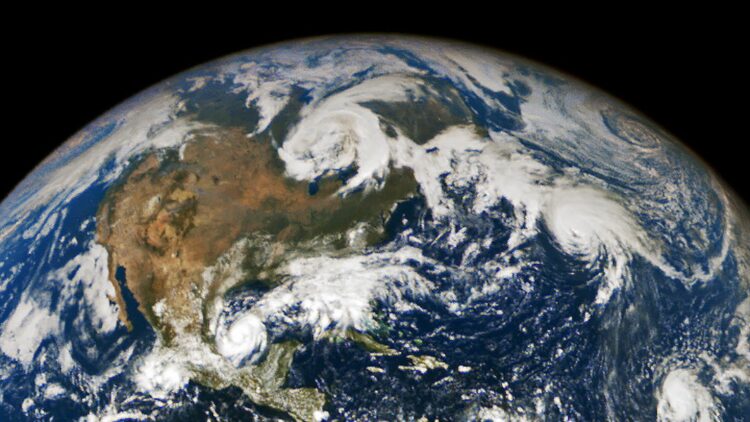Many wonder why, despite the United States and Europe being at almost the same latitude, the climate is so different, especially cold in winter in parts of the United States. And one of the main reasons is the ocean currents in the Atlantic. The main current system of the Atlantic Ocean, known as the Atlantic Meridional Overturning Circulation (AMOC), has been a key component of the global thermostat for millennia. These currents transport heat from the tropics to Europe, explained Ben Moat, head of open ocean physics at the UK’s National Oceanography Centre.
The research warns that in high-emission scenarios, the AMOC could enter an irreversible process of weakening
It turns out that not only is the change in temperatures interesting, but also the profound effect and consequences of this situation on the environment. As experts explain, there is an immense and constant, almost imperceptible, pulse in the depths of the ocean that moves the planet’s climate with the precision of an antique clock. The research, in which the Potsdam Institute for Climate Impact Research (PIK) is participating, warns that in high-emission scenarios, the AMOC could enter an irreversible process of weakening and eventual collapse, with profound and lasting consequences for the climate of the Northern Hemisphere, and particularly for Europe. Experts say that this ‘pulse’ could stop completely after the year 2100 if greenhouse gas emissions continue on their current trajectory.
“If you imagine a wood-burning stove in your house, it draws in cold air towards the heat. This heat rises and circulates”
To make it easier to understand, experts explain it using everyday language. “If you imagine a wood-burning stove in your house, it draws in cold air towards the heat. This heat rises and circulates,” one expert explained to Live Science, adding, “That also happens in most of the world’s oceans.” Many wonder why some cities in Western Europe have milder winters than parts of North America, even though they share the same latitude. The answer lies in the Atlantic currents. This potential collapse stems from a well-identified critical point: the breakdown of deep winter convection in key North Atlantic seas, such as the Labrador, Irminger, and Nordic Seas.
The consequences of global warming are that the warmer, less saline surface waters no longer sink easily
This is understandable considering that in these regions, cold, dense waters used to sink, carrying with them warmer ocean masses in a cycle that regulated the climate of the North Atlantic. This is clearly essential for regulating the climatic conditions (temperature) of these areas of planet Earth. However, global warming reduces the ocean’s heat loss in winter, weakening this process. The consequences of global warming are that the warmer, less saline surface waters no longer sink easily, thus disrupting the circulation cycle. This system is called the Atlantic Meridional Overturning Circulation (AMOC), the network of ocean currents that traverse the Atlantic Ocean. The AMOC functions like a massive conveyor belt, moving 17 million cubic meters of water per second and 1.2 petawatts of heat, according to estimates by Moat.
In short, scientists explain that a self-destructive feedback loop has been detected: weakening currents reduce the flow of warm, salty water northward, further cooling and desalinating surface waters. Furthermore, the prevailing winds, known as westerlies, blow from west to east, transporting warm ocean air into the atmosphere, much like a “fan heater,” explained David Thornalley, professor of ocean and climate sciences at University College London. This situation is extremely worrying because the collapse of this cycle would bring extreme winters and drier summers to Western Europe, alterations in tropical rainfall patterns, and a massive redistribution of ocean heat. This helps explain why temperatures are fluctuating and also the critical situation the planet is facing.

